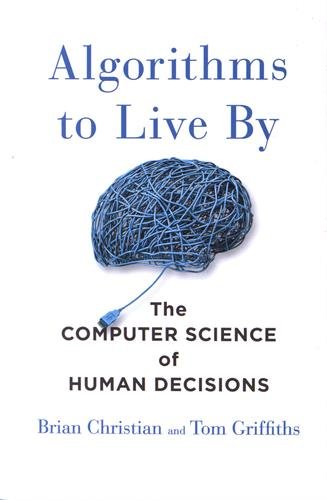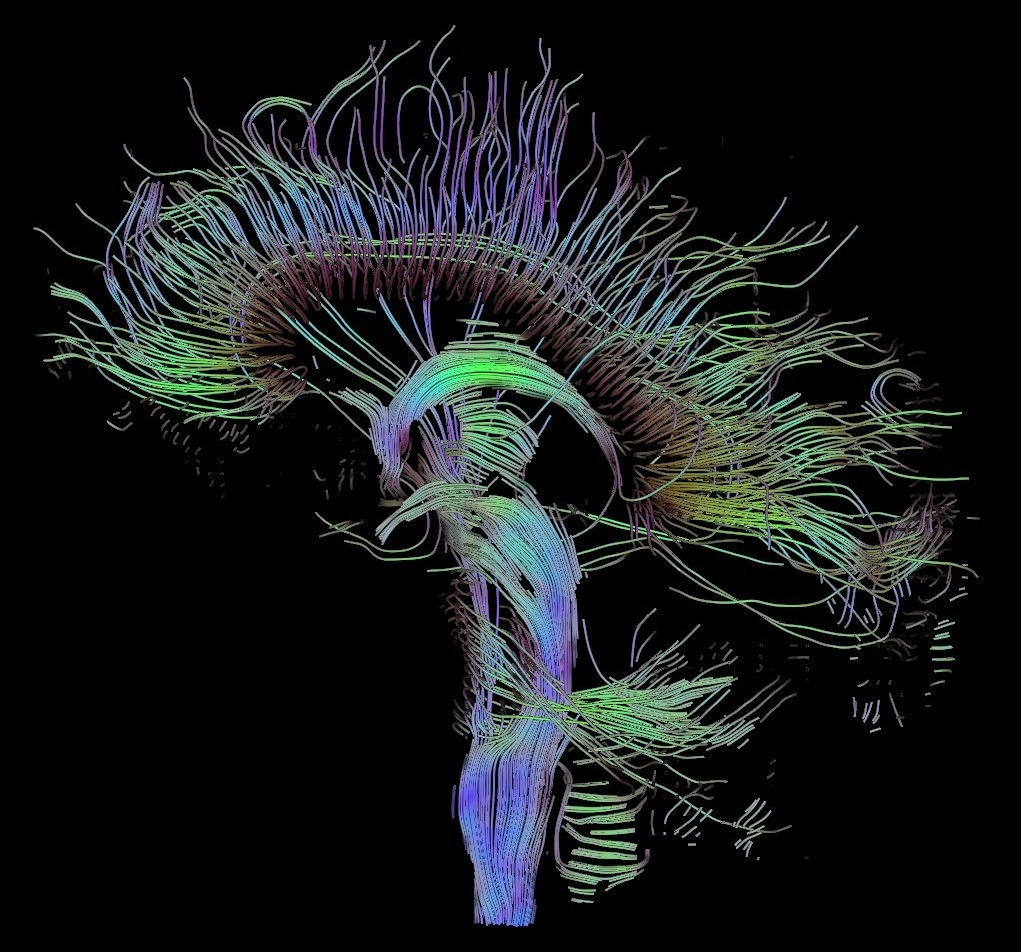Algorithms to Live By Summary

7 min read ⌚
 The Computer Science of Human Decisions
The Computer Science of Human Decisions
Computers are great at calculating stuff, right? Just imagine how good your life would have been if you could use them to assess day-to-day life problems!
Now, you don’t have to! Because Brian Christian and Tom Griffiths have written a handy, little book, you can use to compute your life away. And it has a great title too: “Algorithms to Live By”!
Who Should Read “Algorithms to Live By”? And Why?
There’s an equation which neatly links the imaginary unit and two irrational numbers; but there isn’t one which will help you find your soulmate. Really – then what’s the point in learning math?
Well, “Algorithms to Live By” answers this in a spectacularly unexpected manner: because math applies to real life. And because you can make better decisions and organize your time and your life better if you follow few mathematical equations. And you know what they say – math is an exact science.
So, want to learn few tips and tricks – dare we say: cheat sheets – to improve your life? Look no further than this book.
About Brian Christian and Tom Griffiths
 Brian Christian is an American writer and poet.
Brian Christian is an American writer and poet.
He holds both computer science and philosophy degrees from Brown University and is a Master of Fine Arts in poetry from the University of Washington.
In addition to “Algorithms to Live By,” he has also written “The Most Human Human.”
 Tom Griffiths is a professor at University of California, Berkeley, teaching subjects such as psychology and cognitive science.
Tom Griffiths is a professor at University of California, Berkeley, teaching subjects such as psychology and cognitive science.
He is also in charge of Berkley’s Computational Cognitive Science Lab. “Algorithms to Live By” is his only book so far.
“Algorithms to Live By PDF Summary”
Let’s start with the most obvious question:
What, exactly, is an algorithm?
According to Wikipedia, it is “an unambiguous specification of how to solve a class of problems.” According to us, that’s a fairly complex way to say something very simple. And that is: an algorithm is a finite series of steps which, if repeated, can help you solve one type of a problem with the same rate of success every time you try to solve it!
We don’t blame you for thinking that algorithms are something math-related; the word itself is too “scientificy.” However, if you read our definition once again, you’ll realize that you can use algorithms to solve everyday problems.
And, that’s exactly what Christian and Griffiths’ book is all about.
For example, let’s just say that you need to hire a person at your company and that there are ten possible candidates. Your intuition says that you need to assess each and every one of them and then decide on the best applicant.
Math, however, says that you only need to look at four applicants – merely in order to devise a standard. The next applicant who is better than each of the previous applicants is most probably the right one!
It may sound counterintuitive, but it’s an algorithm – so you can be sure that it’s true! More scientifically, it’s called the theory of optimal stopping, and the example we just went over – secretary problem.
And, in more general terms, it means that 37% is the magic number to stop analyzing and start making decisions!
Interesting?
Here’s another one.
Let’s say that you need to sort the books in your library in alphabetical order. There are at least three ways to do it.
First of all, you can choose the bubble sort method. It means repeatedly comparing each pair of neighboring books and swapping their places if they are not in the right order.
Secondly, you can choose the insertion sort. In this case, you remove all the books in your library before putting them back one by one, by comparing each new book with the ones already sorted.
Finally, you can opt for the merge sort, in which you divide your collection into halves (until you can manage one selection) and then combine those halves in a sorted manner.
All of these methods seem good?
Well, they are not! The bubble sort method is the worst, the merge sort is the best one. It doesn’t depend on a person, nor on circumstances.
Why?
Because, simply put, the math says so.

We’ll round up our summary with algorithm #3 (out of the many Christian and Griffiths elucidate). This one will certainly give you an argument to not clean your desk. And it may even help you pass your exams – especially those you’ve learned only little about.
In order to understand it, here’s a quick intro to how your computer works. It stores – but, you already know this – data on your hard-drive, which is basically a gramophone: a mechanical arm and a rotating disk; the latter keeps the information in the form of a binary code, the former writes and reads it. SSDs are even better – they don’t have moving parts (but a series of interconnected flash memory chips), so they access the information almost instantaneously. So, in other words, they are faster.
Either way, they need to be optimized for your optimal experience.
And that means – they need to be able to provide for you what you need the most faster than what you rarely need. So, they keep the most important stuff on the top layer. And they replace it gradually using a complex set of algorithms you can learn more about here.
But, in a nutshell – when you open a new program, for the next few days, your computer keeps parts of it open in the background, supposing you’ll need it in the recent future. If you don’t use it again in the next few days – it erases this, making room for what you have opened in the meantime.
OK, you say, but how does this help me pass my exams and tell my mother that “science says so I don’t need to clean my desk”?
Well, because essentially your brain functions in a much similar manner. Just like computers (and you yourself), it can’t know whether the book you’re currently reading or the film you watched this morning will be necessary to you in the future.
However, it makes sure that the information you are obtaining at any given moment would be most readily available for use during the next few days. You know – just in case. If you don’t use it – then it makes space for something else you’ve done in the meantime. And the cycle goes on until you finally start reusing some information which, translated into the language of your brain, means: “OK, this we’ll definitely need in the future. So, I better make sure that I put it in my ‘long-term’ drawer.”
Now, moving on to what this means in practice.
You have a big exam tomorrow morning? Read your notes the night before, and your brain will keep the information most readily available for you until you put down your pen. And the mess on your desk? Just keep the things you use most often on top and tell your mom that “clutter and creativity go together.”
Truth be told, we can’t guarantee that it will make any palpable difference.
Key Lessons from “Algorithms to Live By”
1. Maximize Your Chances of Finding Your One Perfect Love
2. Manage Your Time Using Three Simple Algorithms
3. Make Your Employees Behave the Way You’ll Like Them to Behave
Maximize Your Chances of Finding Your One Perfect Love
Finding the perfect partner is a daunting task. After all, how would you know when to stop looking?
Well, the math says that there is a way. After all, we’re not immortal, so, in other words, you don’t have an unlimited amount of time to look for the perfect one.
What you need to do is very simple. First, decide how much time would you like to spend searching for your future husband or wife. Then, reserve 37% of it for partners who you will discard – but based on who you’ll also devise a standard for what’s good.
Finally, choose the very next one who will be better than the previous partners.
(Yes: in a way, this happened on “Black Mirror” as well).
Manage Your Time Using Three Simple Algorithms
Time management is one of the most important skills you can acquire in your lifetime. And there are three simple math algorithms from where you should start.
First, the Earliest Due Date algorithm. In plain words – start with the tasks with the closest deadline. Secondly, Moore’s algorithm, aka skip the task which requires most of your time (so, no, it’s not a good idea to eat that frog in the morning). And finally, the Single-Task algorithm. Now, that one’s pretty self-explanatory.
Make Your Employees Behave the Way You’ll Like Them to Behave
Many employers – especially in Japan – have problems with their employees not taking their vacations. And making many mistakes because of it.
The company “Evernote” even gave its employees incentives – $1,000 for those who’ll use their vacation days! To no avail! (Really? Really?)
Math says that they should have done something far more obvious: making vacation mandatory. Nothing else would have worked.
Like this summary? We’d like to invite you to download our free 12 min app, for more amazing summaries and audiobooks.
“Algorithms to Live By” Quotes
Our judgments betray our expectations, and our expectations betray our experience. What we project about the future reveals a lot—about the world we live in, and about our own past. Share on X If you followed the best possible process, then you’ve done all you can, and you shouldn’t blame yourself if things didn’t go your way. Share on X No choice recurs. We may get similar choices again, but never that exact one. Hesitation—inaction—is just as irrevocable as action. Share on X Everything starts to break down, however, when a species gains language. What we talk about isn’t what we experience—we speak chiefly of interesting things, and those tend to be things that are uncommon. Share on X Not every problem that can be formally articulated has an answer. Share on X Our Critical Review
Our Critical Review
“Algorithms to Live By” was described in many adjectives and not few of them were superlatives: “fascinating,” “remarkable,” “excellent,” “wonderful,” “compulsively readable.” Possibly because – as a “Popular Science” review stated – “it’s the perfect antidote to the argument you often hear from young math students: ‘What’s the point? I’ll never use this in real life!’”
So, you want to experience how life looks like from the viewpoint of Spock? Dig in: this book will help you do at least few things in your life in a purely rational Vulcan-type-of-way.








